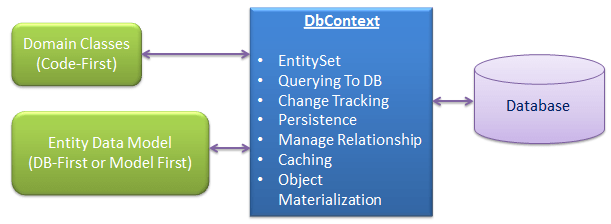

- #DBCONTEXT GENERATOR DATA ANNOTATIONS HOW TO#
- #DBCONTEXT GENERATOR DATA ANNOTATIONS UPDATE#
- #DBCONTEXT GENERATOR DATA ANNOTATIONS CODE#
- #DBCONTEXT GENERATOR DATA ANNOTATIONS WINDOWS 8#
#DBCONTEXT GENERATOR DATA ANNOTATIONS CODE#
If you are using Code First EF then you will be defining your own DbContext to put your DbSets in. Therefore it is a good tool to have in your armoury. ValidateEntity is more complex than the previous validation procedures, but it can check things that nothing else can. NET frameworks use this, such as ASP.NET MVC then any tests you write here are also checked closer to the user interface, so feedback is quicker. The really nice thing about IValidatableObject is because many other. I have personally used it to check some complex data where the state of one property in a class depends on the state of another. In this sample test I check that the slug relates to the Name of the tag, so a Tag with a Name of “News HeadLines” could have a Slug of “news”, but not of “ReadAllAboutIt”.Īs you can imagine, you can write almost any test you like as long as it only needs to access members of the class. you have access to the properties of the class instance you are checking. Let’s look at a simple example by adding a Validate method to our Tag class:Īs you can see. that check data annotations will also validate any classes that have the IValidatableObject interface. Again, the same validation stages in MVC, EF etc. You then add a ‘ Validate' method which then allows more complex tests to be written than can be achieved the data annotations. IValidatableObject is an interface that can be applied to any class. means the column will not be NULL and sets the size of the string in the database. I should also point out that in EF Code First, where you define the database through code, some of these attributes also define the table structure, e.g.

means that the property cannot be blank and allows more complex tests on strings. is fairly obvious, in that it sets the maximum length of the string (there is also a MinLength too). The data annotations are the items in square brackets above the properties it relates to. I have also included a property called Slug, which in this context is the part of a URL which identifies a page using human-readable keywords. Tags are often added to Posts to indicate which topics the post is about, e.g. NET frameworks EF also validates data against any data annotations before it commits that data to the database.īelow is a simple example of a database to hold blog posts where we have a Tag class. (see Dino Esposito’s article on data annotations in MVC ).
#DBCONTEXT GENERATOR DATA ANNOTATIONS WINDOWS 8#
NET frameworks include validation via data annotations, like Windows 8 apps and ASP.NET MVC. These data annotations define rules that a separate validation stage checks against the current content of the property. Data Annotationsĭata annotations are attributes that add validation rules to a property or class (see ).
#DBCONTEXT GENERATOR DATA ANNOTATIONS HOW TO#
To help you understand how to use each of these techniques, let me go through each of them in turn with an example.
#DBCONTEXT GENERATOR DATA ANNOTATIONS UPDATE#
If found it will run the requested validations and only commit the database update if all checks pass. DbUpdateException Capturing database-generated errorsīy default, EF checks for all three of these data validations on any entry that has been added or modified.

A DbContext method that allows access to the database while checking. This is a method where to can code your own checks. Three of these are inside EF and are easy to set up while the last one involved capturing errors reported by the underlying database. In EF there are four possible checks that can be applied to data before it is written to the database. That way you have a cleaner database and, hopefully, less frustrated users. I want to show you how you can use EF’s data validation to improve your error checking and how to pass EF’s error messages back to the user. However, because EF comes after the user-interface data validation, its error feedback is often relegated to catching any exceptions that EF throws and showing a generic ‘there was a problem’ message. By default, EF validates all data before it is written to the database, using a wide range of data validation methods. Whatever the cause, we need to prevent bad data reaching the database.Įntity Framework’s (EF) data validation is part of the solution for catching bad data in an application. There are other ways that bad data will arrive: it could mean an attack by hackers, for example. For them, we need to provide meaningful error messages to help them quickly correct their input otherwise they will get annoyed or, on ecommerce sites, they may give up and not buy anything. Most of the time, bad data gets to a system because our users get things wrong with data entry.


 0 kommentar(er)
0 kommentar(er)
